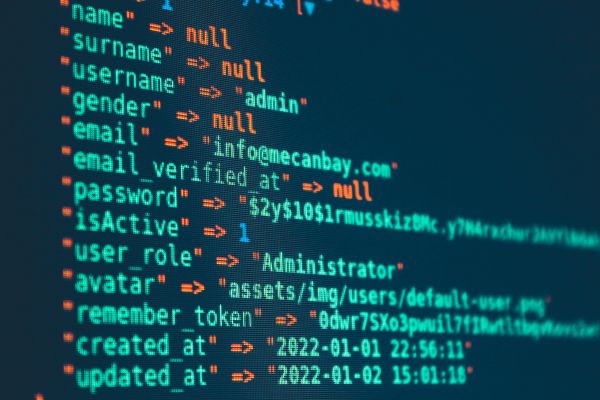In today’s digital era, where almost every aspect of our lives is intertwined with the internet, the importance of protecting your online accounts cannot be overstated. Cybersecurity threats are evolving rapidly, and hackers are constantly developing new techniques to exploit vulnerabilities. If you’ve ever wondered how to secure online accounts effectively, this comprehensive guide will walk you through expert strategies to safeguard your digital presence.
Understanding the Importance of Online Security
The first step to securing online accounts is understanding why it matters. From social media profiles to banking platforms, online accounts store sensitive personal and financial information. A single breach can result in identity theft, financial loss, and emotional stress. As more people rely on cloud storage, online shopping, and remote work tools, the need for robust online security has become critical.
Hackers are no longer targeting only large corporations; individuals are equally at risk. Phishing scams, weak passwords, and unsecured networks are common entry points for cybercriminals. This is why learning how to secure online accounts is not optional—it’s a necessity in today’s connected world.
Creating Strong and Unique Passwords for Every Account
One of the simplest yet most effective ways to secure online accounts is by using strong, unique passwords. Weak or reused passwords are among the leading causes of data breaches. A strong password combines uppercase and lowercase letters, numbers, and special characters in an unpredictable sequence. Avoid using easily guessable information such as your name, birthday, or common words.
It’s equally important to use a different password for each account. This prevents a domino effect where the compromise of one account leads to access to all others. For those managing multiple accounts, a reputable password manager can help generate and store complex passwords securely.
Enabling Two-Factor Authentication for Added Protection
Two-factor authentication, commonly known as 2FA, provides an additional layer of security beyond passwords. When enabled, it requires a second verification step, such as a code sent to your phone or an authentication app. This means even if a hacker obtains your password, they cannot access your account without the second factor.
Most major platforms now support 2FA, and it’s wise to enable it wherever possible. This simple measure significantly reduces the risk of unauthorized access and gives you peace of mind knowing your accounts have an extra layer of protection.
Recognizing and Avoiding Phishing Attacks
Phishing attacks remain one of the most common tactics used by cybercriminals. These scams often arrive as emails or messages that appear to come from legitimate organizations, urging you to click on a link or provide sensitive information.
To avoid falling victim to phishing, always verify the sender’s details and look out for signs of suspicious communication, such as grammatical errors, unexpected requests, or links that seem slightly off. Never share passwords or personal data via email, and only log in to accounts through official websites, not through links in emails or messages.
Keeping Software and Devices Up to Date
Outdated software often contains vulnerabilities that hackers exploit to gain access to accounts and systems. Regularly updating your operating system, browsers, and applications ensures you have the latest security patches and improvements.
This practice extends to antivirus programs and firewalls as well. Keeping your security tools up to date helps detect and block potential threats before they can compromise your accounts. Even smart devices such as phones and IoT gadgets require regular updates to maintain their defenses against cyber risks.
Monitoring Account Activity for Suspicious Behavior
Many online platforms offer activity logs where you can review login attempts and account actions. Regularly monitoring these logs helps detect unauthorized access early. If you notice logins from unfamiliar locations or devices, change your password immediately and enable two-factor authentication if it’s not already active.
Consider setting up alerts for suspicious activities such as password changes or new device logins. This proactive approach allows you to respond quickly if someone attempts to breach your account.
Using Secure Networks and Avoiding Public Wi-Fi
Public Wi-Fi networks are notoriously insecure, making it easy for hackers to intercept data transmitted over them. To secure online accounts when you’re on the go, avoid logging into sensitive accounts on public networks. If you must use public Wi-Fi, consider using a virtual private network (VPN) to encrypt your internet traffic.
A VPN masks your IP address and secures your data, making it harder for attackers to intercept your information. This extra layer of protection is especially useful when accessing banking or email accounts from unfamiliar networks.
Staying Informed About Cybersecurity Trends
Cyber threats evolve constantly, and staying informed about the latest risks is crucial. Follow reputable cybersecurity blogs, news outlets, or even official updates from service providers to remain aware of emerging threats.
Many platforms also provide security checkup tools to help users strengthen their accounts. Taking advantage of these resources ensures you’re not only reacting to threats but also preventing them proactively.
Building a Habit of Regular Security Checks
Securing your online accounts is not a one-time task. It requires continuous effort and vigilance. Regularly review your account security settings, update passwords, and check for unused accounts that could become weak points if left unattended. Deleting accounts you no longer use helps reduce your online footprint and minimizes potential targets for attackers.
Conclusion: Stay One Step Ahead of Cyber Threats
Learning how to secure online accounts is an essential skill in the digital age. By adopting strong passwords, enabling two-factor authentication, staying vigilant against phishing attacks, and keeping your devices updated, you can significantly lower your risk of cyberattacks. Remember, online security is not about fear but about empowerment—taking proactive steps to protect your digital identity ensures you stay in control of your information.
As cybercriminals grow more sophisticated, so too must your defenses. Start implementing these expert tips today and make your online accounts a fortress against any threat.
